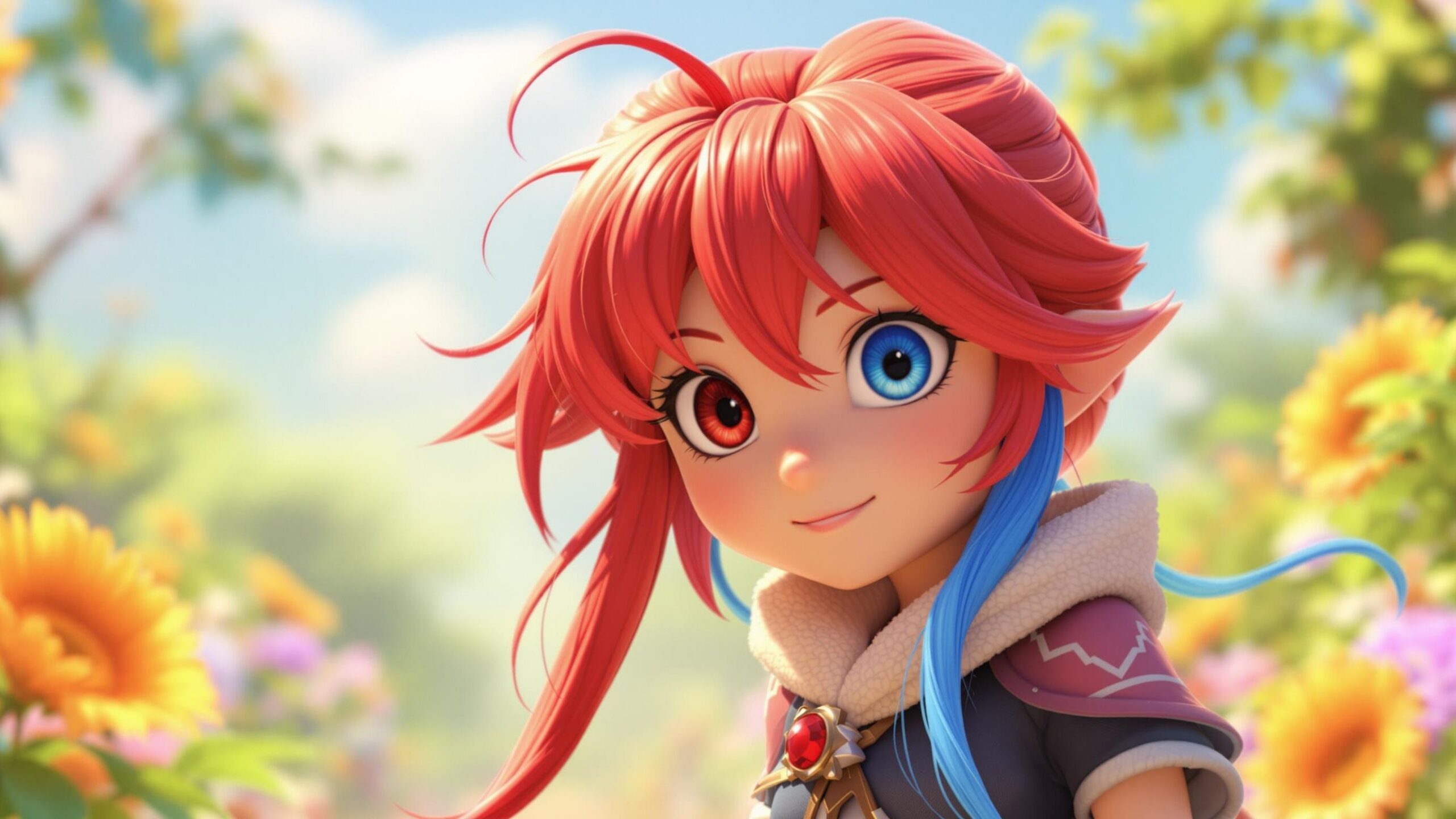Fire Emblem is a franchise built on war, loyalty, love, and sacrifice. Behind every strategic victory lies the threat of painful loss—and the games never shy away from delivering emotional blows that leave players devastated. From classic entries on the NES and GBA to the sweeping dramas of modern titles like Three Houses and Engage, Fire Emblem has consistently told stories that tug at the heartstrings and demand tough choices. Today, we’re honoring the top 10 most heartbreaking moments in Fire Emblem history—the scenes that made us put down the controller, stare at the screen, and maybe shed a tear or two.
#10: Greil’s Death (Fire Emblem: Path of Radiance)
Greil, the steadfast leader of the Greil Mercenaries and father to protagonist Ike, is a rock for much of Path of Radiance. His strength, wisdom, and kindness define the early chapters of the game. But when he is struck down by the Black Knight in one of the most shocking battles in series history, players are left gutted. Watching Ike—a young, inexperienced fighter—kneel beside his father’s lifeless body is absolutely heartbreaking. It’s not just the death itself, but the ripples it sends through the story: Ike is forced to grow up overnight, assuming leadership of the mercenaries and carrying the crushing burden of avenging his father. Greil’s death feels raw, sudden, and deeply personal, setting a tragic tone for the rest of Ike’s journey. It’s a masterclass in storytelling that reminds players that in Fire Emblem, no one—not even a beloved mentor—is truly safe.
#9: Ninian’s Death (Fire Emblem: The Blazing Blade)
In The Blazing Blade, Ninian’s gentle spirit and budding relationship with Eliwood offer a brief glimmer of warmth in a story full of battles and betrayal. That makes her death all the more devastating. Tricked and manipulated by the sinister Nergal, Eliwood is forced into a tragic situation where he unknowingly strikes down Ninian in dragon form. Watching Eliwood realize what he’s done—collapsing in horror as Ninian’s human form crumples to the ground—is an emotional gut punch. The game doesn’t shy away from the weight of the moment; it lingers, forcing players to sit with Eliwood’s grief and guilt. Though later story developments offer some hope, nothing erases the heartbreak of that initial scene. It’s a moment that forever alters Eliwood—and burns into the memory of every player who witnesses it.
#8: Arvis Betrays Sigurd (Fire Emblem: Genealogy of the Holy War)
The betrayal at Belhalla stands as one of the darkest moments in all of Fire Emblem history. Sigurd, the noble-hearted hero of Genealogy of the Holy War, spends the first half of the game building alliances, fighting injustice, and striving for peace. When he finally reunites with his wife Deirdre and is promised safe passage by Arvis, players breathe a sigh of relief—only for that hope to be brutally ripped away. Arvis reveals his betrayal by orchestrating a massacre that sees Sigurd and his entire army incinerated. It’s a horrifying moment of utter helplessness. Watching Sigurd die after investing so much into his journey feels like the rug being ripped out from under you. It’s a storytelling masterstroke, establishing Arvis as one of the series’ most complex villains and setting the stage for the next generation’s bitter struggle.
#7: The Death of Emmeryn (Fire Emblem: Awakening)
Emmeryn’s sacrifice in Fire Emblem: Awakening is a moment of pure heartbreak that defines the tone of the war-torn story. As the Exalt of Ylisse, Emmeryn embodies compassion, peace, and selflessness. When her kingdom faces collapse and her people are held hostage, Emmeryn chooses to throw herself from a cliff, hoping her death will inspire peace rather than provoke further bloodshed. The scene is devastating—quiet, somber, and full of anguish. Watching Chrom, Lissa, and the Shepherds react with horror and helplessness cements the emotional impact. Emmeryn’s death transforms Chrom, hardening his resolve but forever shadowing his idealism. It’s a reminder that sometimes even the purest hearts can’t survive the cruelty of war—and that sacrifice doesn’t always guarantee victory. Emmeryn’s loss echoes throughout Awakening, shaping every battle that follows.
#6: Edelgard’s Fall (Fire Emblem: Three Houses)
Depending on your choices in Three Houses, one of the most heartbreaking scenes is the fall of Edelgard. As the leader of the Black Eagles, Edelgard’s dream of dismantling the Church and ending corruption is noble—but her methods grow increasingly ruthless. If players side against her in the Silver Snow or Azure Moon routes, the final confrontation becomes a tragedy rather than a triumph. Facing Byleth and their former classmates, a defeated Edelgard—bloodied but unbowed—refuses to surrender her ideals, even at the cost of her life. Her death, often at the hands of those who once loved her, feels less like a victory and more like the tragic end of someone who tried to change the world but was consumed by the violence she sought to end. Edelgard’s fall is a masterclass in tragic character writing, forcing players to reflect on the cost of ambition and the blurred lines between hero and villain.
#5: The Tragedy of Sothis (Fire Emblem: Three Houses)
In Three Houses, Sothis starts as a mysterious presence inside Byleth’s mind—a guiding, sometimes sarcastic, always caring companion. As the story unfolds, we learn Sothis is no mere voice: she is a goddess, deeply connected to Byleth’s own existence. Their bond grows slowly but powerfully, feeling more familial than spiritual. That’s what makes the moment when Sothis sacrifices herself to merge with Byleth utterly heartbreaking. In a quiet, haunting scene, Sothis offers her own existence to empower Byleth, granting them the strength needed to change the future. It’s not a loud, explosive death; it’s a quiet, willing self-erasure. What makes it even sadder is that Byleth doesn’t fully process the grief, remaining stoic even as players keenly feel the loss. Sothis’ fading voice—soft, bittersweet, and final—leaves an aching silence that lingers long after the scene ends. Her sacrifice forever changes Byleth, and even in victory, there’s a haunting sense that a vital piece of them was lost.
#4: The Death of Leif’s Parents (Fire Emblem: Thracia 776)
Fire Emblem: Thracia 776 offers some of the bleakest storytelling in the franchise—and Leif’s early life is at the center of that darkness. Orphaned by the brutal invasion of the Kingdom of Leonster, Leif loses his father Quan and his mother Ethlyn in a devastating sequence that players experience from multiple sides. Quan and Ethlyn’s deaths are foreshadowed in Genealogy of the Holy War, but Thracia 776 gives their loss even greater emotional weight. Ethlyn’s desperate, futile attempt to protect her infant son, the horrifying betrayal by supposed allies, and the brutal slaughter of Quan’s forces—all culminate in a tragedy that feels deeply personal. Leif’s character is shaped entirely by this early trauma, and players carry the weight of that loss throughout the grim, grueling campaign. It’s a perfect example of how Fire Emblem intertwines personal grief with political conflict, creating a tragedy that feels both epic and painfully intimate.
#3: Dimitri’s Spiral into Madness (Fire Emblem: Three Houses)
Dimitri Alexandre Blaiddyd’s fall into madness during the midgame of Three Houses is one of the most gut-wrenching character arcs in the series. Once a noble, idealistic prince, Dimitri’s descent into bloodthirsty vengeance following the Tragedy of Duscur and the betrayal of his homeland is heartbreaking to witness. Haunted by hallucinations, burdened by guilt, and consumed by hatred, Dimitri becomes almost unrecognizable—a broken shadow of the man he once was. Watching him snarl and lunge at imagined enemies, ignore his friends’ pleas, and stagger through battlefields drenched in rage cuts deeper because players remember who he used to be. What makes Dimitri’s arc even more tragic is that redemption is possible—but it requires patience, compassion, and the willingness to fight for his soul as much as for Fódlan’s future. His spiral, recovery, and ultimate bittersweet redemption are some of the most powerful storytelling Fire Emblem has ever delivered, making every tear shed along the way worth it.
#2: The Death of Aeris (Fire Emblem: Mystery of the Emblem)
While not as widely known outside of hardcore fans, the death of Aeris (not to be confused with Aerith from Final Fantasy) in Mystery of the Emblem remains one of the franchise’s oldest emotional gut-punches. Aeris, a gentle priestess, becomes embroiled in the war against Medeus and the Dohlr Empire. Her kindness and faith in humanity shine through even the darkest parts of the story. Tragically, when Marth and his allies are captured, Aeris sacrifices herself to allow them to escape, facing brutal execution at the hands of enemy forces. Her death is sudden and brutal, shocking players who had grown attached to her quiet strength. In a game where death is often a mechanic (with permadeath for units), Aeris’ scripted death cuts deeper because it’s unavoidable—no tactical mastery can save her. Her sacrifice resonates throughout Marth’s journey, reminding players that even victories come at terrible costs—and that kindness can be its own form of heroism, even in defeat.
#1: The Tragedy of the Tragedy of Duscur (Fire Emblem: Three Houses)
The single most devastating event that shapes Three Houses—and some of its most beloved characters—is the Tragedy of Duscur. Years before the events of the game, King Lambert of Faerghus is assassinated, and Dimitri’s closest friends and retainers are slaughtered in a horrific massacre falsely blamed on the people of Duscur. The political framing of the tragedy leads to the systematic persecution of an entire race, fueling cycles of hatred, guilt, and vengeance that ripple through the story’s multiple routes. The tragedy’s aftershocks shatter Dimitri’s mind, destroy his ideals, and poison relationships across Fódlan. Characters like Dedue, who survives but bears the weight of guilt and discrimination, show how far-reaching the emotional consequences are. The Tragedy of Duscur isn’t a single scene—it’s a wound that festers through the entire narrative, shaping destinies and shattering dreams. Its heartbreak lies in its complexity: a single night of betrayal leads to decades of pain, and even when justice is sought, healing remains painfully slow. It’s Fire Emblem storytelling at its most devastating—and most masterful.
Conclusion
Across its long and storied history, Fire Emblem has delivered tactical triumphs—but it’s the emotional tragedies that truly define the series. These heartbreaking moments—of betrayal, sacrifice, loss, and redemption—aren’t just sad for the sake of drama. They shape the characters, fuel the conflicts, and give the victories deeper meaning. Whether it’s watching a noble hero fall, losing a beloved friend, or carrying the weight of irreversible mistakes, Fire Emblem reminds us that the greatest battles are often fought inside the heart. It’s those emotional scars that make the journeys so unforgettable—and why we keep returning to the fields of Fódlan, Ylisse, Tellius, and beyond.





